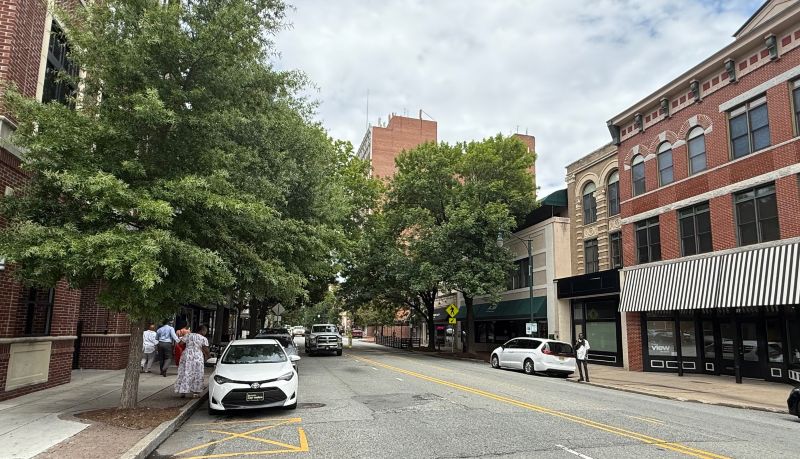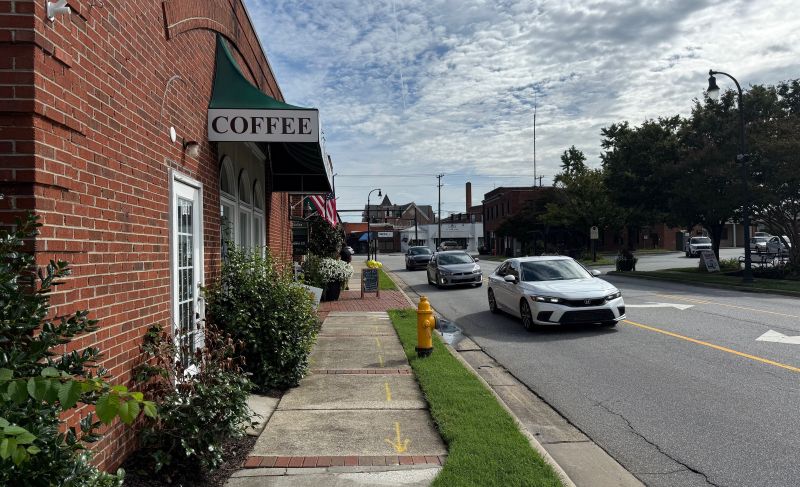Prevalence of small-town visitors could spark interest in small outlets, storefronts
HIGH POINT — As a much younger reporter starting out my career in journalism in the early 1990s, one of the biggest projects I got to work on was a series of articles on the redevelopment of downtown Suffolk, Virginia.
Like other downtowns, its longtime businesses had suffered from competition from larger shopping malls, namely the lure those shopping malls had for anchor tenants and consumers looking for a new type of indoor shopping experience.
Another challenge for the struggling downtown was that it was not perceived as safe, particularly in the evenings. Thus, the area shopping malls and strip shopping centers continued to lure tenants and foot traffic that saw these venues as safer, while also offering plenty of options, particularly around the busy holiday season.
Since then, much has changed as shopping malls themselves have faced competition from retail development along the main corridors, populated by the likes of Walmart, Target, Panera Bread, Ulta Beauty, Kohl’s, Barnes & Noble, Ross and TJ Maxx, not to mention a wide mix of local grocery stores.
Today many of these shopping centers continue to thrive, thanks mostly to the large anchors and other popular neighbors such as Sam’s Club, Costco, Home Depot and Lowe’s. Popular furniture retailers with a growing national store footprint, such as La-Z-Boy, Bassett, Arhaus, Ethan Allen, Ashley, Rooms To Go and Bob’s, also continue to be major draws as do some small independent furniture stores that find a home nearby.
Yet while these shopping centers continue to thrive, they face some challenges too, including e-commerce and the lure of shopping without leaving one’s home.
But since we’re talking about brick and mortar primarily here, one of the biggest challenges for retail storefronts is heavy vehicular traffic that you need to navigate to access such destinations. In the small town of Kernersville, just outside High Point, for example, traffic getting to these retail destinations has gotten worse and worse, particularly in the evenings and on weekends not to mention around the holidays. It’s a fact given that most people are shopping at the same places for the same types of products/commodities whether we’re talking soap, detergent, cereal or clothing.

Thus, downtowns are starting to reemerge as places where people can have a different experience altogether. For one, they are gathering places for local spring or fall festivals and ever-popular vintage car shows. Some even have small parks nearby for people to visit with their kids, pets or just by themselves. In Kernersville, there’s even a movie night in the park, which has become an increasingly popular place to go with friends and family and get to meet new people who are part of the same community.
And while you still have to drive to get there, downtowns offer consumers the chance to get outside and actually walk to and browse a number of storefronts along their path. These can include anything from restaurants and coffee shops to bookstores, health clubs, art stores, clothing stores and, yes, even furniture stores.
Perhaps not so ironically, many independent furniture stores got their start in these types of environments, most notably before the sprawl of shopping malls and other retail development became a factor. Some of these stores may have followed the shift in consumer shopping patterns, moving from downtown to higher traffic areas where clusters of furniture stores — notably nationally known chains — have opened and thrived over the years.
Obviously for the local independent family-owned and -operated stores, such high traffic and visibility are critical to success. No one wants to be in a dead zone.

But in today’s world, where consumers, young and old alike, are looking for a unique shopping experience, a retailer finding a home in a thriving downtown can be part of their long-term success.
For one, you probably won’t be competing with a whole group of other furniture retailers. Secondly, your mix could be perceived as unique as your location as it’s something different from some commodity type of product you’ll likely find at big-box retailers. Third, you will benefit from the increasing numbers of people that are frequenting your downtown. And to top it off, many of those shoppers will like getting to know the folks that run the business and in turn supporting that business. In retail, there’s something to be said of having a fan base, and being downtown can create that base with repeat customers you come to know over time.
Of course the store footprints will obviously be smaller than the likes of the nearly 90,000-square-foot Ashley flagship store that opened recently in Las Vegas or the 37,000-square-foot Bob’s Discount Furniture store that also recently opened in Winston-Salem. But therein lies the opportunity: a chance to showcase your brand — however large or small your business may be — to the local community in a smaller showroom.
None of this is to say that setting up shop downtown is a guarantee of success. Obviously not every downtown is doing as well as the next. Any decision to move has to be based on research and real numbers, including things like vehicular and pedestrian traffic, public safety, the cost of rent, support and involvement of the local chamber of commerce and, of course, appearance. The reason many downtowns are doing well is because they are clean, have plenty of trees, walkable sidewalks and plenty of places to park, to name a few core elements.
But in support of downtowns everywhere, we also suggest that every one have a decent furniture store. For many consumers, that could be a great way to support their local business community, while also finding something they can’t find anywhere else amid the traffic and sprawling nature of the suburban shopping center.




